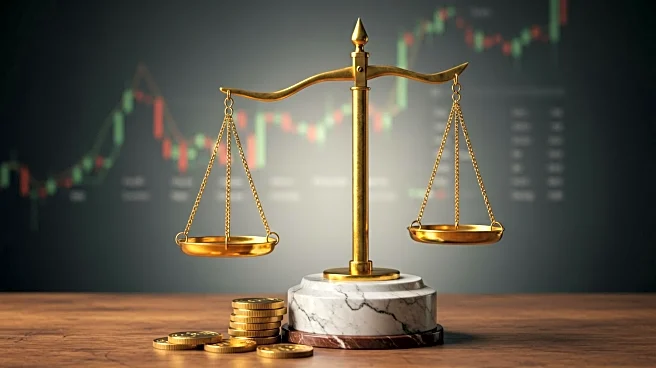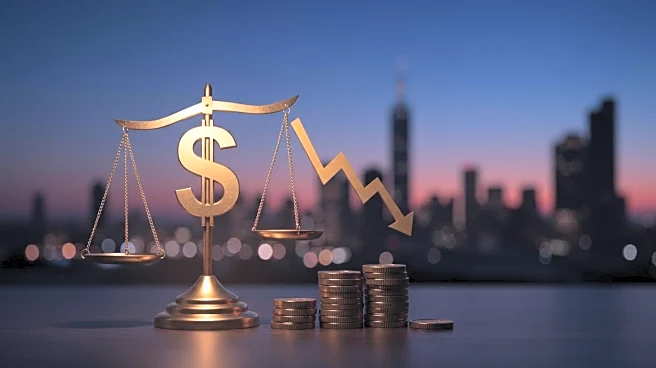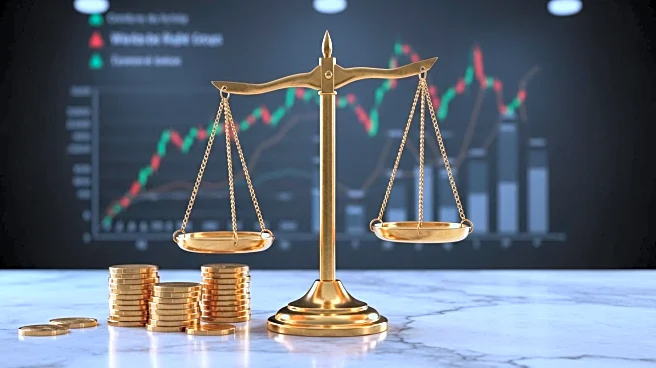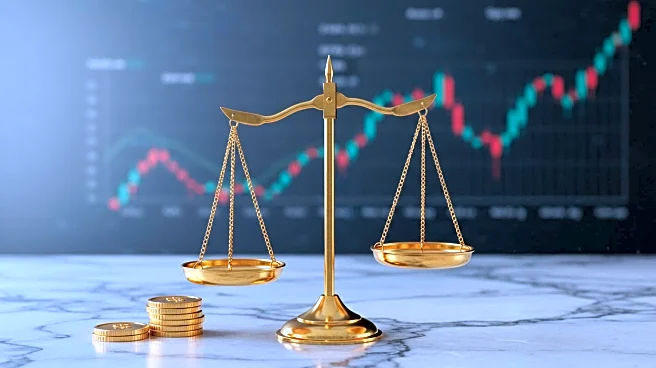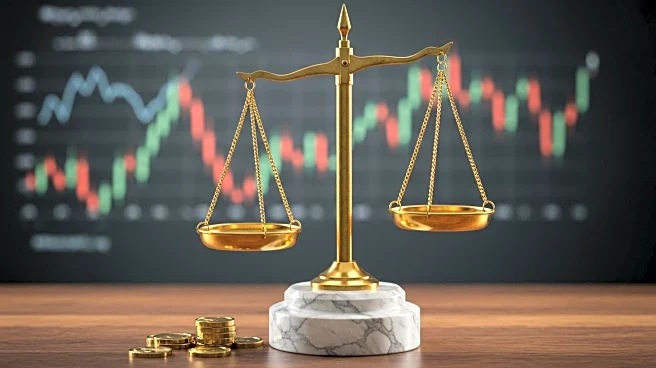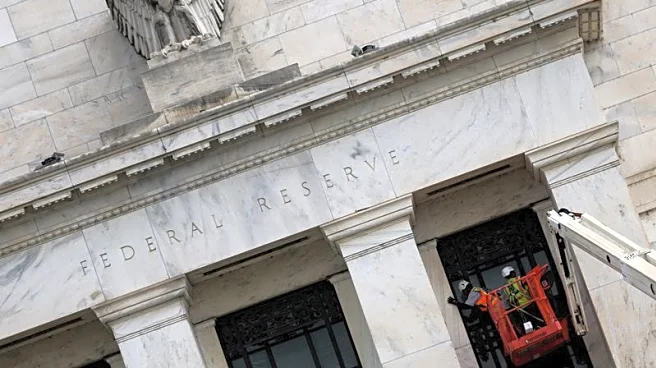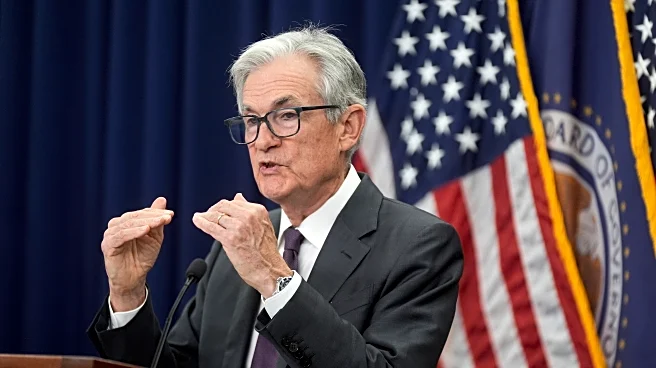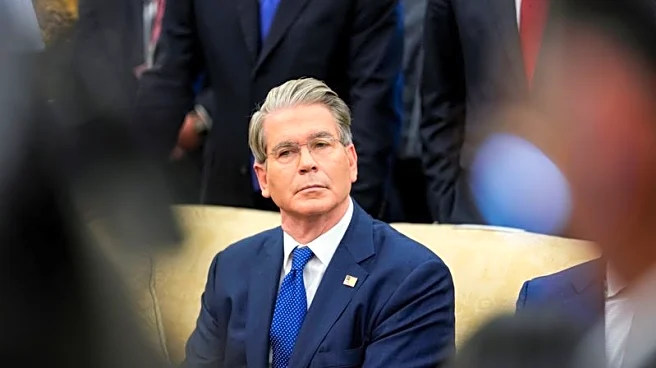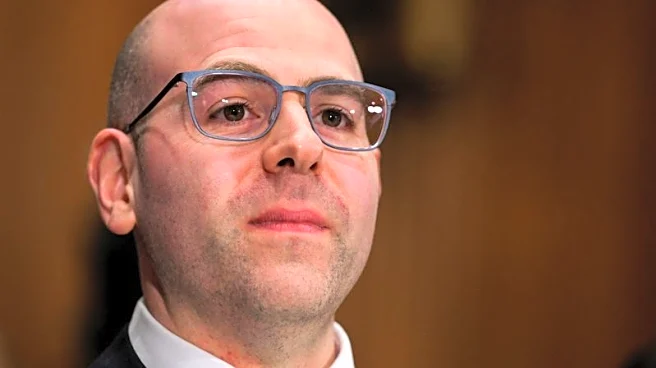What's Happening?
The precious metals market has seen muted volatility recently, with gold futures posting modest gains. The primary driver of these movements is the relationship between gold and the U.S. dollar, which has shown a near-perfect inverse correlation. Gold futures advanced due to dollar weakness, indicating that currency fluctuations are dictating price direction rather than gold-specific fundamentals. Treasury Secretary Scott Bessent has advocated for a 50-basis-point rate cut in September, which could influence gold prices and reduce the appeal of dollar-denominated Treasury securities.
Why It's Important?
The potential rate cut by the Federal Reserve could create a favorable environment for gold prices, impacting investors and the broader economy. A dovish monetary policy may lead to a sustained rally in the precious metals sector, while reducing the attractiveness of Treasury securities. This shift could affect investment strategies and economic stability, as market participants adjust to changing interest rates and currency dynamics.
What's Next?
Investors are closely monitoring Federal Reserve communications for policy signals that could drive gold prices. A dovish surprise could spark a breakout in gold prices, while a hawkish pivot might extend the current sideways trading pattern. The anticipated rate cut could serve as a catalyst for significant changes in the precious metals market.
